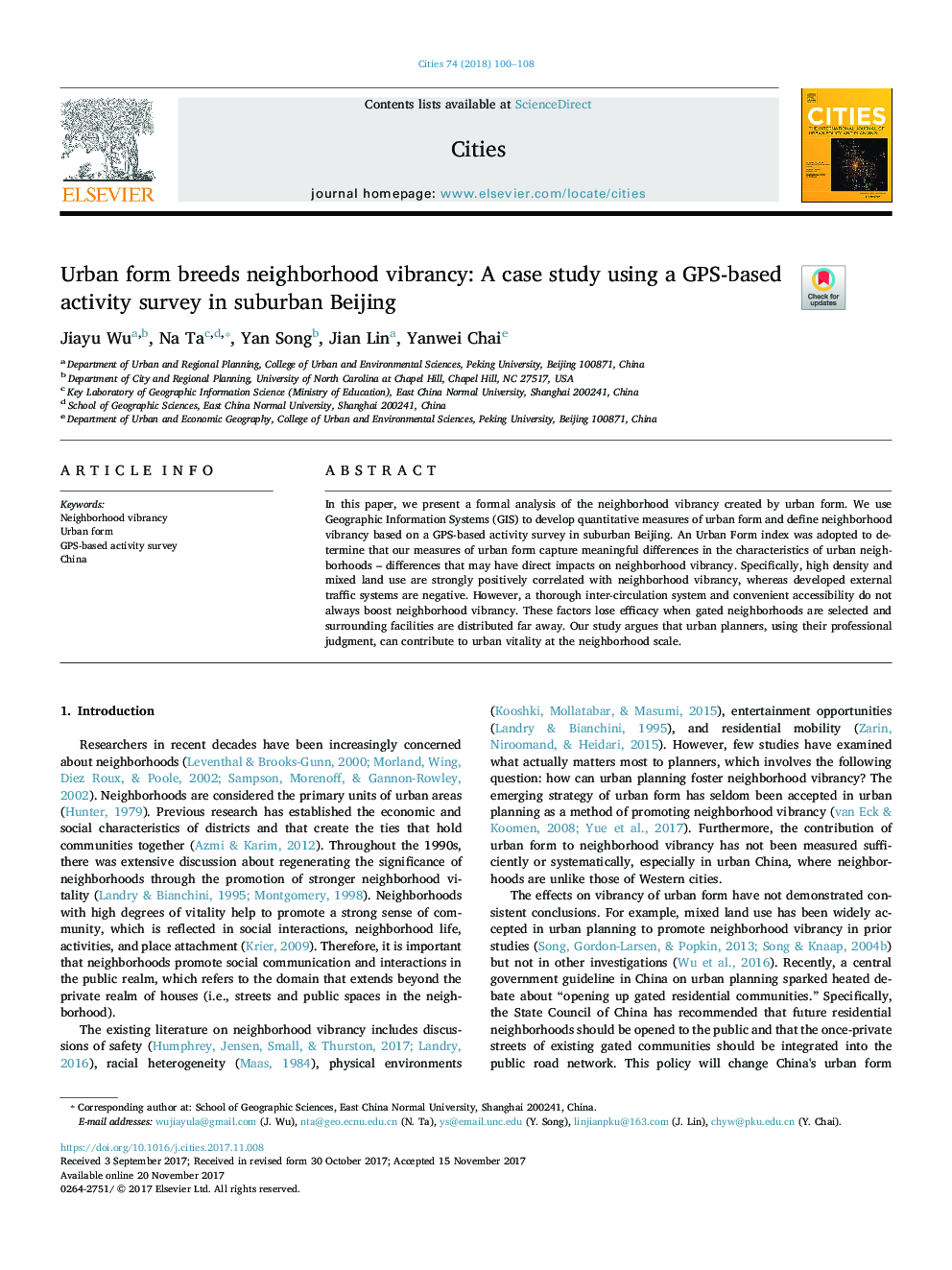| Article ID | Journal | Published Year | Pages | File Type |
|---|---|---|---|---|
| 7417491 | Cities | 2018 | 9 Pages |
Abstract
In this paper, we present a formal analysis of the neighborhood vibrancy created by urban form. We use Geographic Information Systems (GIS) to develop quantitative measures of urban form and define neighborhood vibrancy based on a GPS-based activity survey in suburban Beijing. An Urban Form index was adopted to determine that our measures of urban form capture meaningful differences in the characteristics of urban neighborhoods - differences that may have direct impacts on neighborhood vibrancy. Specifically, high density and mixed land use are strongly positively correlated with neighborhood vibrancy, whereas developed external traffic systems are negative. However, a thorough inter-circulation system and convenient accessibility do not always boost neighborhood vibrancy. These factors lose efficacy when gated neighborhoods are selected and surrounding facilities are distributed far away. Our study argues that urban planners, using their professional judgment, can contribute to urban vitality at the neighborhood scale.
Keywords
Related Topics
Social Sciences and Humanities
Business, Management and Accounting
Tourism, Leisure and Hospitality Management
Authors
Jiayu Wu, Na Ta, Yan Song, Jian Lin, Yanwei Chai,
